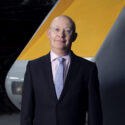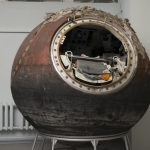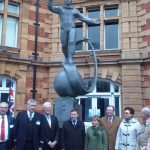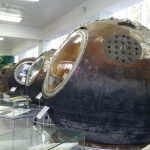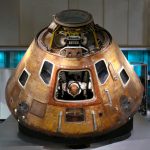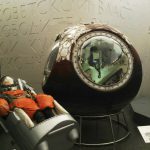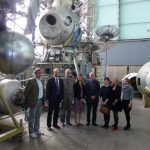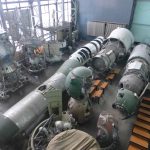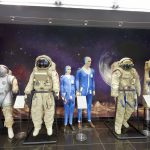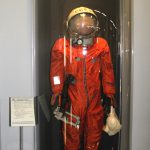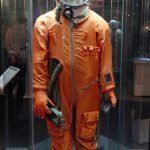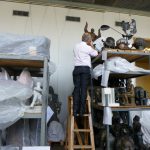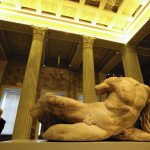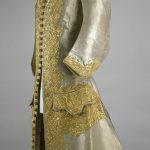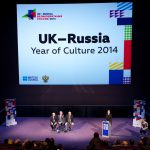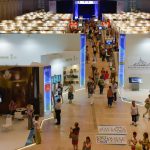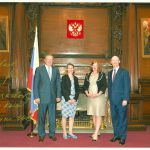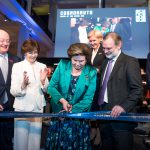The Cosmonauts challenge
Article DOI: https://dx.doi.org/10.15180/150406
Abstract
Focusing on the experience of working with Russia’s cultural, industrial and political sectors, this paper investigates how the development of new contacts and partnerships has contributed not only to the loan of material of historic significance to the Science Museum’s exhibition, but more broadly changes perceptions about Russia and its space programme in the western world. Addressing the multiple challenges involved – legal, political and security, among others – it reveals the importance of many of the space objects themselves as well as demonstrating how the Science Museum has helped to maintain a dialogue with Russia even during the most testing times.
In September 2015 the Science Museum opened the most ambitious special exhibition it had ever undertaken: Cosmonauts: birth of the space age. Whilst the creation of a ‘blockbuster’ exhibition might be the normal expectation of a great art museum, the fact that a science museum should undertake such an endeavour is equally worthy of comment, and this article seeks to illustrate the exceptional curatorial, museological, logistical, legal and political hurdles that this project had to overcome. Indeed, they would astonish even the grandest and most experienced of the international art museums. Art museums are delighted when they can display the acclaimed works of Monet, but even the most valuable paintings cannot be said to be have been official state secrets in the way that so much Russian space technology has been.
The curatorial team kept its nerve because of a compelling sense that while the project delivery was high stress, the intellectual rewards would be considerable, and especially the opportunity to present a story of human endeavour in which cultural and scientific excellence are so intertwined. When the project team started out they could never have anticipated that they would be seeking to deliver an audacious exhibition set against a background of very serious strains in the UK-Russia relationship. In the end, they learned a great deal about Russia itself and the importance of sustaining cultural dialogue.
Keywords
CCCP, Cosmonauts, Gagarin, Korolev, Leonov, RKK Energia, Roscosmos, Rosizo, Russia, Soviet Union, space technology, Sputnik, Tereshkova, Titov, Tsiolkovsky, USSR, Voskhod, Vostok
1. Introduction: the exhibition vision
https://dx.doi.org/10.15180/150406/002
In the summer of 1961, over half of a million visitors attended the Earl’s Court exhibition hall in London to marvel at 10,000 exhibits brought to the UK from the Soviet Union. The USSR Industrial Exhibition was a masterpiece of the Soviet propaganda machine, offering a glimpse into its lifestyle while promoting the communist way of life. The 87-metre span of the exhibition hall’s steel truss roof provided an impressive framework for the displays of the latest trends in science, culture and education (Cross, 2012, p 292). The ‘Hall of the Cosmos’, a darkened tall cylindrical display space in the very centre of the exhibition contained engineering models of Sputniks and planetary probes, a revolving globe and state-of-the-art audio-visual content (Clarkson, 2012, p 293). Outer space was at the heart of the 1961 exhibition and, coinciding with the triumphant visit of Yuri Gagarin, made a long-lasting impression on the British public (The Times, 1961).
Fifty years later the curators at the Science Museum sought to bring to London the iconic objects that had made this golden age of space exploration. The Cosmonauts exhibition endeavours to present the most significant collection of space artefacts ever to leave Russia: real, cosmonaut-flown spacecraft, pioneering rocket engines, spacesuits and life support systems. But as crucial as the obvious ‘star’ objects are, the exhibition also reflects on how Russia made science fiction into science fact and confounds expectations by starting with the creative and philosophical concepts of late nineteenth century Russia. Clearly, it tells the story of the Soviet heroes Sergei Korolev, Yuri Gagarin, Valentina Tereshkova and Alexei Leonov, but they all stand on the shoulders of early innovators such as Konstantin Tsiolkovsky (Millard, 2014, p 22–23). Not that the exhibition lacks for astonishing loans too, such as the engineering model of the first satellite Sputnik 1 and the Vostok 6 descent module of Valentina Tereshkova, the first woman in space. Indeed, this article also outlines some of the epic negotiations undertaken to secure a range of iconic loans.
One should also note that an exhibition covering such a wide time range must raise fascinating issues about Russian identity too. Even those of us involved in the project have often fallen into the lazy shorthand of referring to the ‘Soviet’ story. This is wrong. The space story really starts in the final years of Imperial Russia, flourishes in an era of revolution and the Bolshevik state, enjoys a ‘golden’ age in the Soviet period of Nikita Khrushchev and sustains excellence in the post-Communist era of Boris Yeltsin and Vladimir Putin.
For many years the public perception of space science has been known only through the considerable achievements of America’s NASA and the defining moment of the Apollo 11 Moon mission of 1969. And yet Soviet Russia (however defined) was the first space-faring nation. It launched the world’s first satellite (Sputnik) and four years later the first human into orbit (Yuri Gagarin). But when NASA’s Neil Armstrong took his first steps on the Moon the earlier Soviet feats were all but forgotten. The secrecy under which Russia carried out its space programme – all part of its military-industrial complex – no doubt lies at the root of this, and it has been the Science Museum’s mission to bring this untold story to light, through an exhibition of unprecedented ambition.
The Museum’s desire to tell the unknown story through an unprecedented showcase of real historical technology, equipment and memorabilia proved to be one of the most complex and challenging projects within the museum sector. It involved negotiations with the military sector, the declassification of certain exhibits, the engagement of state authorities in both countries, and all at a time when the political and economic weather threatened to undermine the project on both ends in a country shaken by economic crisis, territorial disputes and under EU sanctions.
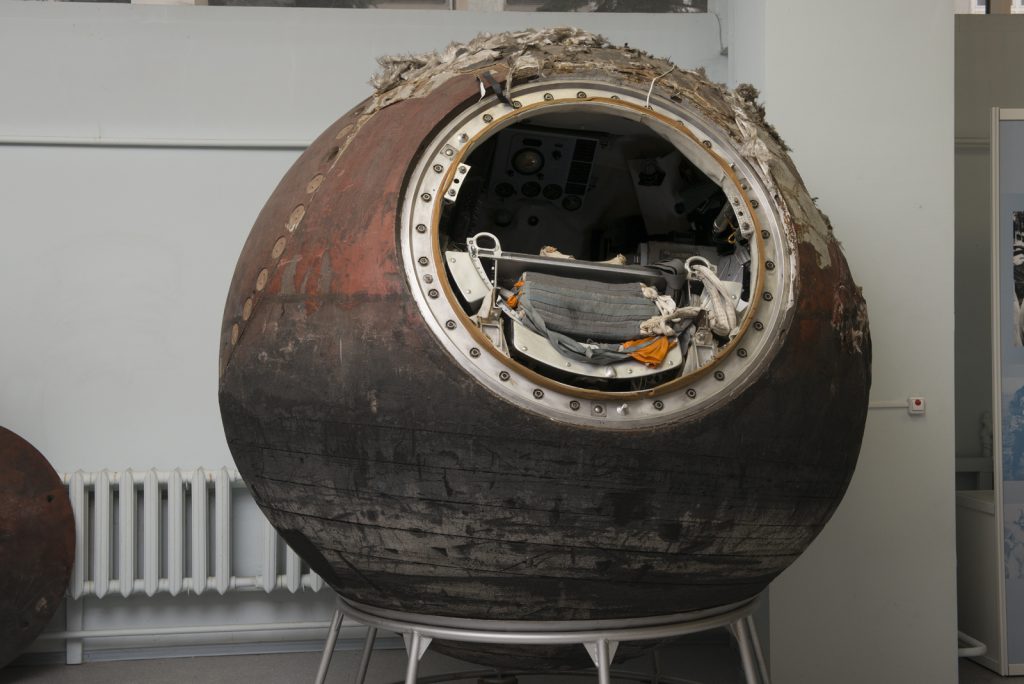
2. Cosmonauts: the challenging exhibition
https://dx.doi.org/10.15180/150406/003In this section we reflect on the turbulent genesis of this project, with a number of false starts before a strong central exhibition concept was agreed. Once that ambition was clear, the project team then encountered a remarkable array of problems in locating authentic objects and overcoming some surreal obstacles.
2.1. Solving the ‘Russian’ space problem
The curatorial team spent many years trying to solve the ‘Russia’ problem. The Museum aspires to present an accurate and international account of scientific achievement through displays and exhibitions; the neglect of Russian achievements has been a long- standing concern.
The Museum’s interest in staging an object-rich temporary exhibition on the history of space exploration with important Soviet and Russian content can be traced back to 1990. The lack of Soviet-era space technology in the Museum’s galleries had been highlighted and the idea of borrowing items for a temporary exhibition explored. A proposal for an International collaboration in space exhibition was considered for our 1992 exhibitions programme. The Museum’s Collection Information Department holds the records of the curatorial exhibition proposal and correspondence related to possible loans from Russia[1]. Doug Millard, assistant curator at the time, recalls that difficulties in bringing the equipment from post-Soviet Russia prevented the project from proceeding, but in 1992 cosmonaut Valentina Tereshkova visited the Museum. Keen to explore new possibilities for collaboration, Millard went to Moscow in 1995 to view the collection of the Memorial Museum of Cosmonautics (MMC) and the remaining exhibits of the Space pavilion at the former Exhibition of Achievements of the People’s Economy. Still, Russian representation in the Museum has been poor owing to the challenges of securing loans of real space technologies from the former USSR, compared to those from Western Europe and the USA[2].
A second attempt to address the issue was made in 2008 when the Museum was approached by a private British enterprise – Science Connections (SC) – with a collaborative proposal for a 2011 event to coincide with the fiftieth anniversary of Gagarin’s historic mission. The initial idea was to bring Gagarin’s historical spacecraft Vostok 1 to the Museum. The Vostok descent modules have never been seen in the West before and, clearly, displaying the spacecraft of the first manned mission at the Science Museum would have been a highlight event of the 2011 festivities. The Museum’s former director, Chris Rapley, supported the proposal and in September 2009 the Museum curators’ were granted access to Russia’s space industry enterprises for the first viewing of the artefacts. Such visits certainly whetted the appetite of the curators involved.
Unfortunately, the goal of staging such an ambitious and costly project within a restricted timeframe was always going to be difficult. The Museum then felt it could only be achieved with the commitment of funding secured by SC. The Memorandum of Understanding, signed by the Museum and its partners SC and the Association of Museums of Cosmonautics (AMCOS), stated that the fund-raising, negotiations with Roscosmos and coordination of this complex project were to be undertaken by SC within strict deadlines. With support from the British Council, the Museum hosted the Deputy Director of Roscosmos, Vitaly Davydov, and the President of AMCOS, cosmonaut Vladimir Dzhanibekov, at a meeting in June 2010, establishing direct contact with potential partners. But by the end of June, as SC failed to secure the funds, plans for the 2011 exhibition ended.
This false start had some helpful, but mainly troublesome, legacies. On the positive side, the Museum made new connections and achieved access to some of the most elusive of Russian space collections. However, the involvement of a commercial partner proved to be a serious mistake. The failure to secure funding left the Russian side disappointed and annoyed. Indeed, in the early years of negotiating loans for Cosmonauts we had to overcome two serious credibility problems with our Russian counterparts: that the Museum was not sufficiently serious – both in curatorial ambition and leadership – and that its real purpose was simply to make money out of the Russian loans. It added to the odds the newly appointed Director Ian Blatchford had to overcome in the following years leading to the opening of Cosmonauts. It might also be said that the idea that Vostok 1 might ever be lent was always deeply implausible. (The quest for a Vostok loan is dealt with in more detail in section 2.4.)
The final (successful) attempt to stage the exhibition started in 2011. The British Council and its Director of Arts, Andrea Rose, were working in partnership with Roscosmos on plans to mark the fiftieth anniversary of the first manned space mission. A project to bring Gagarin’s statue from the Lyubertsy Technical College (the school Gagarin attended as a teenager) to London for public display was being considered. The 1984 monument by sculptor Anatoly Novikov proved impossible to dismantle and Roscosmos funded production of a copy. The statue was duly unveiled in London on 14 July 2011 near the British Council offices on the Mall[3].
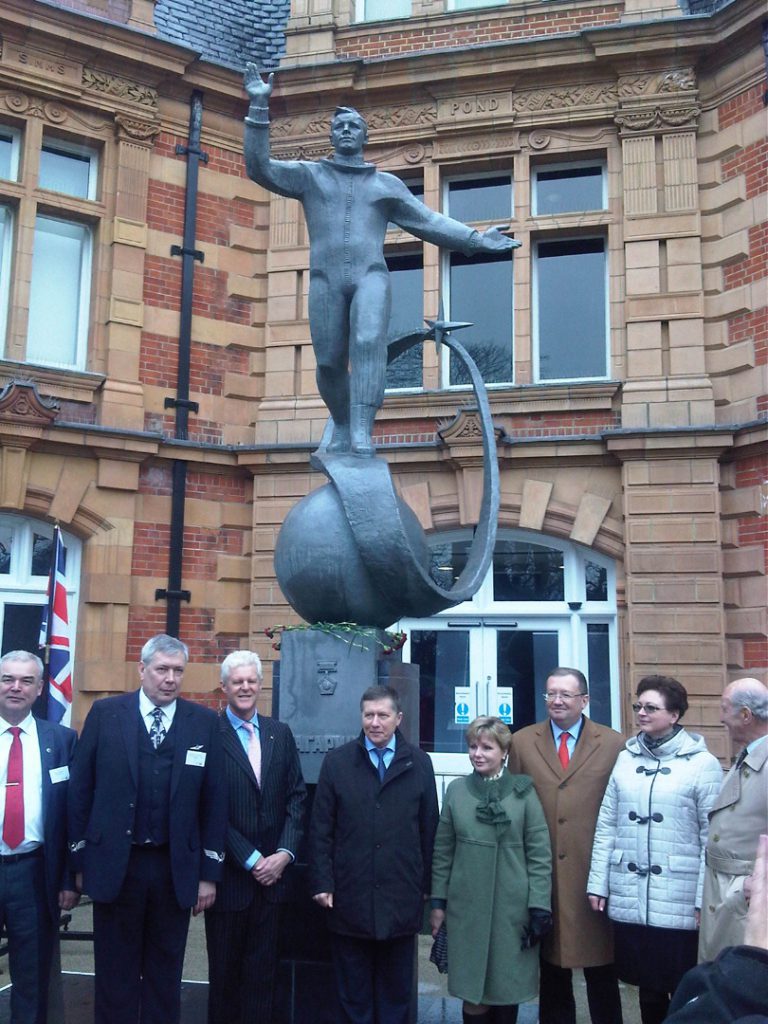
On this occasion, a small display of Soviet space artefacts was devised, featuring objects from NPP Zvezda (the world’s first and Russia’s only space life-support design and production company), RKK Energia (Sergei Korolev’s rocket and spacecraft design bureau)[4] and the Gagarin family archive. Formerly classified objects, such as the 1960 dog spacesuit and catapult car and 1961 Vostok descent module ejector seat, never previously displayed in the UK, were exhibited in the British Council Gallery.
The opening ceremony, attended by Mr Davydov and Sergei Krikalev, Head of Cosmonauts Training Centre, provided an auspicious occasion for the Science Museum’s new Director, Ian Blatchford, to meet key Russian officials and to repair some of the credibility damage arising from the abortive 2008 project. One should also respect the role of personal friendship and collegiality. Andrea Rose and Elena Gagarina, who is Yuri Gagarin’s daughter and also the Director of the Moscow Kremlin Museums, are long-standing artistic collaborators and friends, and Mr Blatchford had worked with Dr Gagarina on a number of joint Kremlin-V&A Museum exhibition projects in his previous role as Deputy Director at the latter.
As further markers of the Museum’s seriousness about the subject, the Science Museum hosted two Russian space-themed talks by Natalya Koroleva (daughter of Sergei Korolev, Chief Designer of the Soviet Missile and Space Programmes) and Sergei Krikalev, the famous Russian cosmonaut and then world-record holder for the longest time spent in orbit of any human being[5]. The British Council had brought both individuals over for the unveiling of the Gagarin statue.
With the benefit of hindsight one might see the 2011 British Council project as being two things: the perfect appetiser for the feast that is Cosmonauts, and as the creative spark that inspired the Museum to make its third and serious attempt to deliver its long-cherished exhibition idea. Very considerable credit is due to Ms Rose for provoking the Museum to build on the British Council legacy.
2.2. Cosmonauts – endeavour to tell the story of space longing
As the Cosmonauts project vision states:
This exhibition will be revelatory. It will bring to the Science Museum the largest and most significant collection of space artefacts ever to leave Russia. Cosmonauts will use real, historic objects – spectacular, intriguing, poignant – to tell the remarkable story of Russia’s pioneering exploration of space. Our visitors will be astonished, fascinated, moved and inspired by the material evidence of humanity’s first steps into the cosmos. Cosmonauts will be a story of Russia and its people. It will show how the Russians that launched the space age in the 1950s drew on a deep, national longing for space – a passion whose form was shaped by the tumultuous decades of Russia’s twentieth century[6].
When the plans for such as exhibition were revisited in 2012, it became obvious the project must be conceived in line with the Museum’s new ambitions for staging major, object-rich exhibitions, emphasising the social and cultural contexts of science, technology and engineering and fostering active collaborations with international science museums and institutions (Strategic Ambitions, 2012). The new exhibition proposal, submitted to the Museum’s Exhibitions Board in October 2012, was to present a broader story and to place the history of Russian and Soviet longing for space in a cultural and historical context.
As a result, Cosmonauts is the first attempt outside the former Eastern bloc to showcase the story of space exploration by Russia and the USSR, interpreted through an object-rich exhibition. It will help correct an unbalanced perception of the Space Age and reveal the breadth and depth of Russia’s remarkable space activities. Amongst other stories the exhibition highlights the remarkable work behind the pioneering Soviet missions of the 1950s and 60s, reveals hitherto unknown histories of the USSR’s manned lunar landing programme, and presents the story of the space stations programmes while asking visitors to contemplate on the future of manned space missions.
In the late nineteenth century, Tsiolkovsky, a seminal theorist of cosmonautics whose calculations and spacecraft designs at the turn of the twentieth century anticipated reality by decades, was heavily influenced by the philosophical Cosmist movement and the thoughts of its founder Nikolai Fedorov. The name chosen for the first pilots of Soviet spacecraft – ‘cosmonauts’ – reflects on the early spiritual roots of the Soviet space programme.
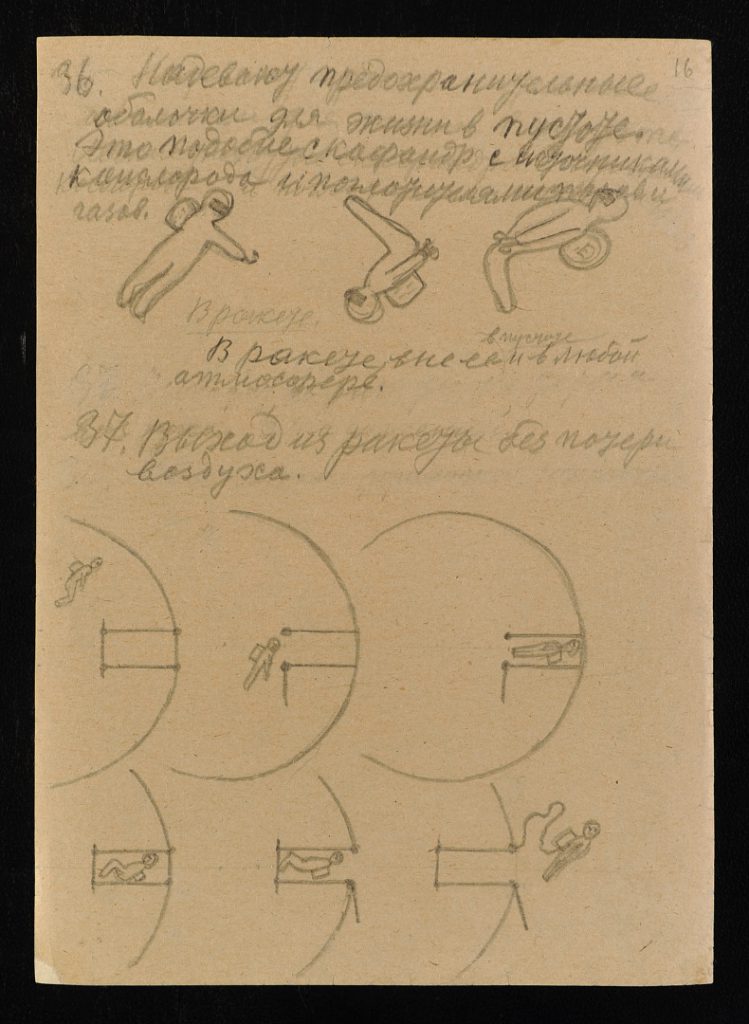
The USSR opened the Space Age when it launched the first artificial satellite, Sputnik, in 1957, outdoing the USA by only a few months. In the late 1950s the Soviets launched a flotilla of spacecraft into orbit, to the Moon and even towards the surface of Venus[7]. In 1961, Gagarin became the first human in space. Over the next few years the world witnessed a number of pioneering manned space missions, including the first woman in space, Tereshkova (1963), and the first spacewalker, Leonov (1965). While the USA was prolific in publicising its space programme, providing information on both achievements and failures, the Soviet Union was reticent; its ‘civilian’ space activities were subsumed within the Soviet military apparatus with its codes and rules of secrecy, where only record missions and achievements were presented to the public.
Today’s Russian Soyuz launch vehicles are used by its own cosmonauts and American astronauts as the sole means of reaching the International Space Station, now that the USA Space Shuttle programme has ended. While the subject of Russian space exploration was extensively researched by both Russian and international scholars, there was no attempt beyond the former Soviet Union territory to represent its visual history through an exhibition dedicated solely to the history of the subject from its roots in the nineteenth century philosophical and spiritual movement of Cosmism to the current programmes.
Finalising the exhibition narrative went in hand with the content team’s search for exceptional objects to tell the story.
2.3. Space objects race
The objects are centre-stage in this project, ranging in size, type and material – from cosmonauts’ food, to posters, art works, space suits, rocket engines, satellites and spacecraft. The aim was to enable visitors to the Museum to appreciate the uniqueness and complexity of each piece, while gaining a sense of how it fits into the bigger picture, both physically and intellectually. This aim determined the strict criteria for content selection.
Whilst the curatorial team identified their ‘dream list’ of objects in the early stages of the project, their task proved far more formidable than persuading sister museums to lend from their collections. Since the fall of the Soviet Union international museum loans have been the lifeblood of large-scale exhibitions and the protocol for such loans is well established, enabling hundreds of objects to be borrowed from Russia every year. With the growing demand for new shows and broader interest in Russian history a new previously unexplored range of objects has come to the attention of specialists. These range from the 42,000-year-old infant mammoth Lyuba, shown at the Mammoths: Ice Age Giants exhibition, held at the Natural History Museum (Lister, 2014, p 79), to a gold and silver inlaid eleventh-century axe head (Williams, Pentz, Wemhoff, 2014, p 88).
However, the aforementioned objects belong to the category of artefacts traditionally collected by museums. Collecting and borrowing space technology is much more challenging. Most space equipment is not reusable and of a disposable nature – not designed to return back to Earth: from launches and engines to satellites and probes, its either stays in orbit or gets burned up on launch or re-entry. Learning about Russian space technology is particularly difficult. Whilst the most significant artefact in the story of USA space exploration, the Apollo 11 command module, is on display at the heart of the National Air and Space Museum, its Russian counterpart, Vostok 1, is kept at the military-style restricted access plant on the outskirts of Moscow.

The curators had to venture well beyond the museum sector and private collections in search of unique exhibits fit to narrate the story of human endeavour. The content team found itself in unchartered territory in its search for original space equipment. The sealed doors of laboratories of technical universities, studios of forgotten artists and warehouses of classified enterprises had to open to enable the team to explore, identify and negotiate prospective loans – rare survivals returned from space.
Whilst an art historian might deploy a catalogue raisonné to establish the core attributes of a proposed loan, for this exhibition the curators had to identify, locate and research prospective objects, as well as establish their status, ownership and provenance in order to bring them to public attention. This has been one of the most fascinating aspects of the project. Whilst an art historian might enjoy the luxury of a ‘point of view’ on the objectives and inspiration of an artist or an artistic movement, they do so on the reasonable assumption that the works in that canon are known and agreed. In the case of Cosmonauts, the curators have created and described a subject ab initio.
2.4. Going ‘East’ – in search of Vostok
The Science Museum’s visitors are enthralled when close to real, historic artefacts. They are mesmerised when standing next to the actual Apollo 10 spacecraft on permanent display in our galleries. We aimed to allow them the same experience with the Soviet spacecraft that marked an age-defining moment in the history of space exploration. That meant the exhibition could only take place if we were successful in negotiating the loan of key technical artefacts. One pivotal issue to be resolved before the exhibition might make any claim to be definitive was the need to identify an iconic Vostok descent module and secure it on loan.

Vostok (‘East’ in Russian) was the first spacecraft to carry humans into space. The dual (space and military) use spacecraft was derived from the Zenit spy satellite that carried cameras and was designed to return to Earth. Its spherical shape provided maximum strength and enough room for a cosmonaut, but no ability to translate orbits. Six historic missions of the first Soviet manned spacecraft were launched between 12 April 1961–16 June 1963, but the whereabouts of only three of the descent modules bringing cosmonauts safely back to Earth could be publicly identified. One of them was to become a star object of the Cosmonauts exhibition.
In the case of Vostok it is easy to forget what is so unique about it: it was designed to return to Earth. It has been through the trauma of launch and re-entry, and so finding an outstanding and authentic Vostok – with all the ‘battle scars’ of burning in the Earth’s atmosphere – would be a dramatic scientific and visual highlight in the exhibition. This contrasts with the launched satellites orbiting the planet, burning up in the atmosphere upon re-entry; and robotic probes which stayed on the planets and other celestial bodies to collect and transmit data. This makes the descent modules of the Vostok series of a wholly different order than rare paintings by artists such as Vermeer.
But the rarity of the Vostok also meant that the team faced a big battle; with only three currently on display, our chances of obtaining permission to borrow were very slim. Gagarin’s Vostok 1 and Tereshkova’s Vostok 6 are held by RKK Energia, which had consistently turned down our repeated requests to borrow them. The public museum sector in Russia holds only one original Vostok descent module – Valery Bykovsky’s Vostok 5 (launched on 14 June 1965), on display in the K. Tsiolkovsky State Museum of the History of Cosmonautics, in Kaluga. Following several curatorial trips and discussions with Museum director Mr Kuzin, it was confirmed that the removal of such a large-scale object would involve demolition of one of the Museum’s walls. Even the curator had to concede that this was a loan request too far.
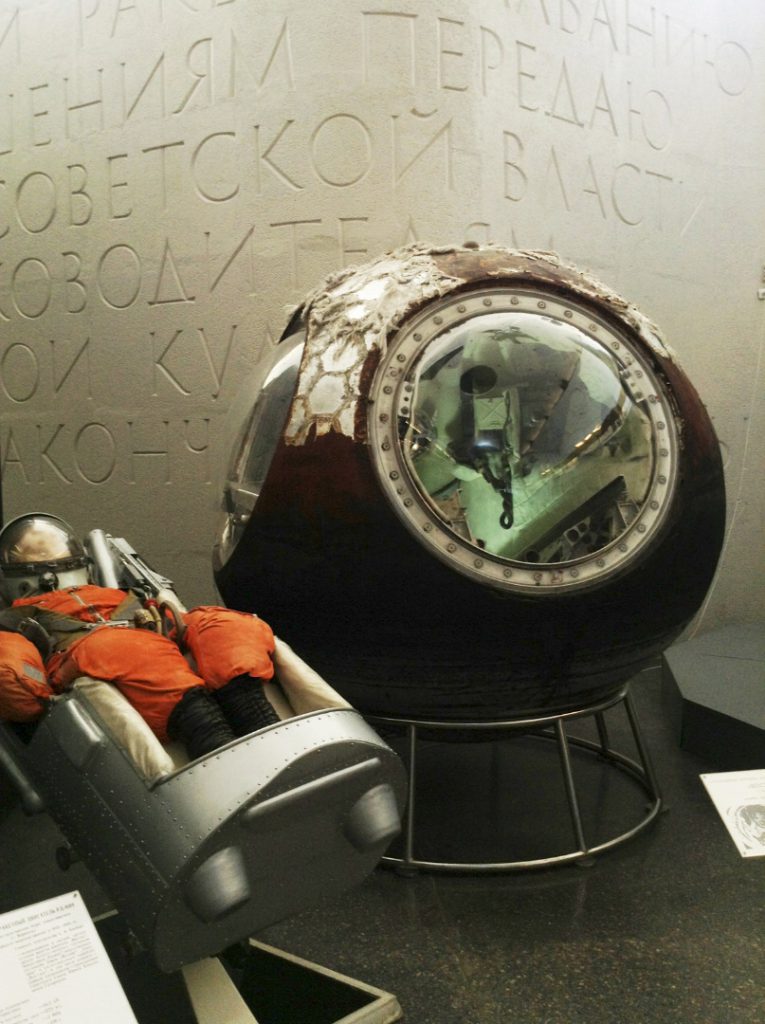
Thus, other options had to be considered. The team examined the evidence that Adriyan Nikolayev’s Vostok 3 (launched on 11 August 1962) was held by the ‘Memorial Museum Complex of the USSR cosmonaut A.G. Nikolayev’, Shorshely village, in the Chuvash Republic. Alas, it transpired that the one displayed is one of the refurbished unmanned Vostok spacecraft. The Russian museum sector holds a number of such descent modules from unmanned missions. Among others, a refurbished descent module of the artificial satellite Intercosmos 6 from the MMC and a privately owned Vostok 3KA-2 on display at the Moscow Planetarium were considered and rejected as potential exhibits.
In late 2012 the curators found themselves seated in the Director’s office looking at the list of identified manned Vostok descent modules in the former Soviet Union, and facing something of a crisis. The final selection of the artefact to tell the story of the pioneering missions of the 1960s had to be made: either Vostok 1 or Vostok 6, both at RKK Energia, and at that point a reluctant potential partner. The Director decided that requesting Vostok 1 would never succeed but that he would commit personally to arguing at the highest level for Vostok 6. Indeed, it was also agreed that the exhibition would be seriously diminished without Vostok 6 and a small number of other crucial objects held by Energia – the ground testing model of the first satellite Sputnik 1 (1957), complete with radio transmitter; the ground testing model of Sputnik 3 (1958), the first scientific laboratory in space; the descent module of the first crewed missions of the Voskhod series and a descent module of the Soyuz series. None of these five key exhibits have ever been seen in the West before.
The negotiation for the loan of those five objects proved the most complicated and complex stage in the process of exhibition preparation. We deal later (subsection 4.3) with the central role of key players such as Deputy Prime Minister for Social Affairs Olga Golodets who provided crucial support in securing these lynchpin loans.
Thus, by the mid-2013 all key exhibits were identified, loan requests had been submitted and negotiations were underway. At this stage another aspect that caused unexpected complication had surfaced, the inherent problem of dual-use technical equipment: its classified status.
2.5. Lunar Lander – unclassified story
For most visitors to Cosmonauts, their encounter with the Lunar Lander will probably be a key moment in their exhibition experience, due to its dramatic physical presence and that fact that it opens a door to part of the Russian space story that is so little understood.
The curatorial team secured key loans from the cultural sector and from various commercial enterprises, but also discovered the important role played by technical universities since some important space technology has been transferred there as educational tools for future engineering students and designers. One such object, discovered and secured as a loan by the curatorial team, was the LK-3 lunar lander.
The lander LK-3 is particularly fascinating because the circumstances of its survival are historically important and poignant. It survives due to the private initiative of an eminent engineer keen to preserve the legacy of Sergei Korolev and to prevent its destruction by factional fighting from various internal agencies involved in the space programme. However, we were to discover this generous but unauthorised act created a minefield of legal complexities – unresolved for decades but finally resolved due to our loan request.
LK stands for ‘Lunnyi Korabl’, a lander designed to carry a single cosmonaut to the surface of the Moon and back to rendezvous with the orbiting mother spacecraft LOK (‘Lunnyi Orbitalnyi Korabl’). As a response to the US commitment to land a man on the Moon by the end of 1960s, the Soviet manned lunar programme with its launcher-spacecraft-lander N1-L3 project was conducted in secrecy. It suffered greatly from many factors, including the sudden death of Korolev, Chief Designer of the country’s entire space programme, as well as rivalry between different research institutes. The programme was abandoned in 1974 (Siddiqi, 2000, pp 832–33). A number of engineering models of the landers were devised and launch pad tests carried out before the programme’s closure.
Such an impressive piece of equipment was coveted by the curators as the pièce de résistance of the exhibition, recounting the story of a secret Soviet manned lunar programme. Extensive research helped to trace one of the remaining LK to the Moscow Aviation Institute (MAI). Other possible lenders were unwilling to lend: the Bauman Moscow State Technical University due to the poor state of their lander, and RKK Energia, which claimed that the engineering model they owned was unavailable.
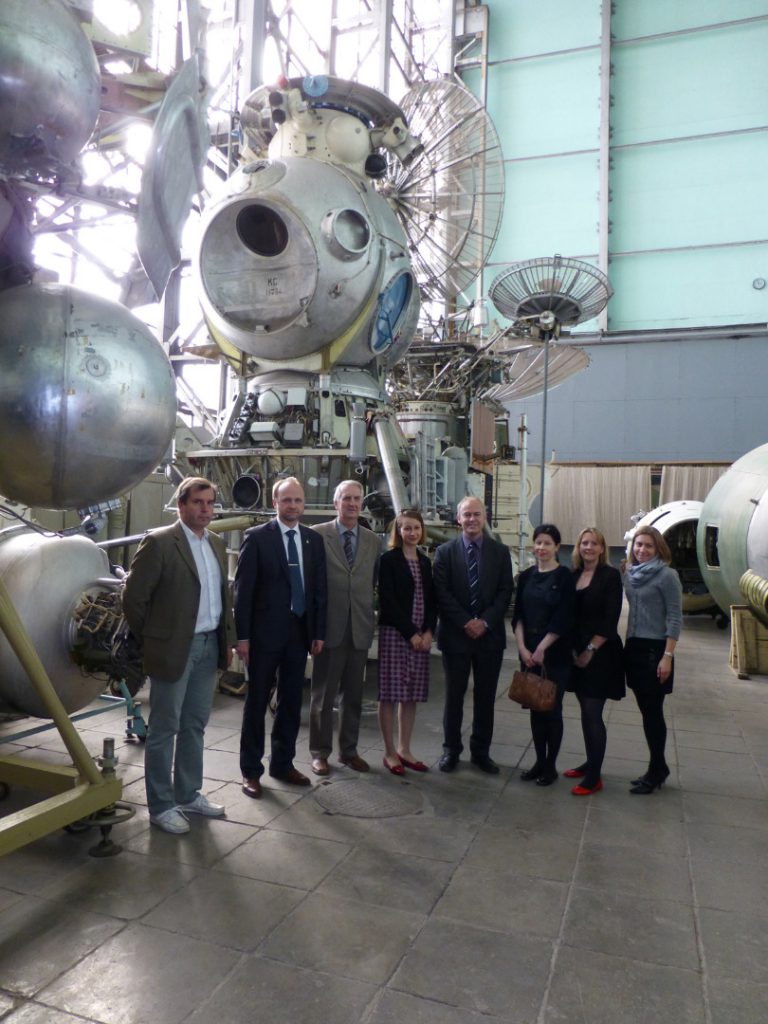
This LK-3 lander (1969, measuring 500 cm x 554 cm x 445 cm) from MAI was previously exhibited at Disneyland, Paris in France in 1997, which seemed to indicate the possibility of borrowing the work and permission to take it out of the country. However, it turned out that what had been possible during the turbulent years following the fall of the Soviet Union was very challenging in 2013–14. First, the ownership and the provenance of the object needed to be confirmed. Extensive research established that the LK-3 was brought to the university by Vasili Mishin, from 1966–1974 the Chief Designer of OKB-1 (now RKK Energia), which had developed the lander. Following the closure of the N1-L3 project in 1974, and facing the imminent disposal of the technology developed for it (Mishin, 1992, Vol. 1, p 130), Mishin rescued LK-3 and took it to MAI, his new place of employment. The lander still serves as a teaching tool for students in the rocket department and is held at Laboratory 601, a hangar-style store located on the university’s premises in Moscow. At the stage of the loan agreement preparation, we discovered there was no paperwork confirming the transfer of the lander, nor any ownership documents or declassification papers.
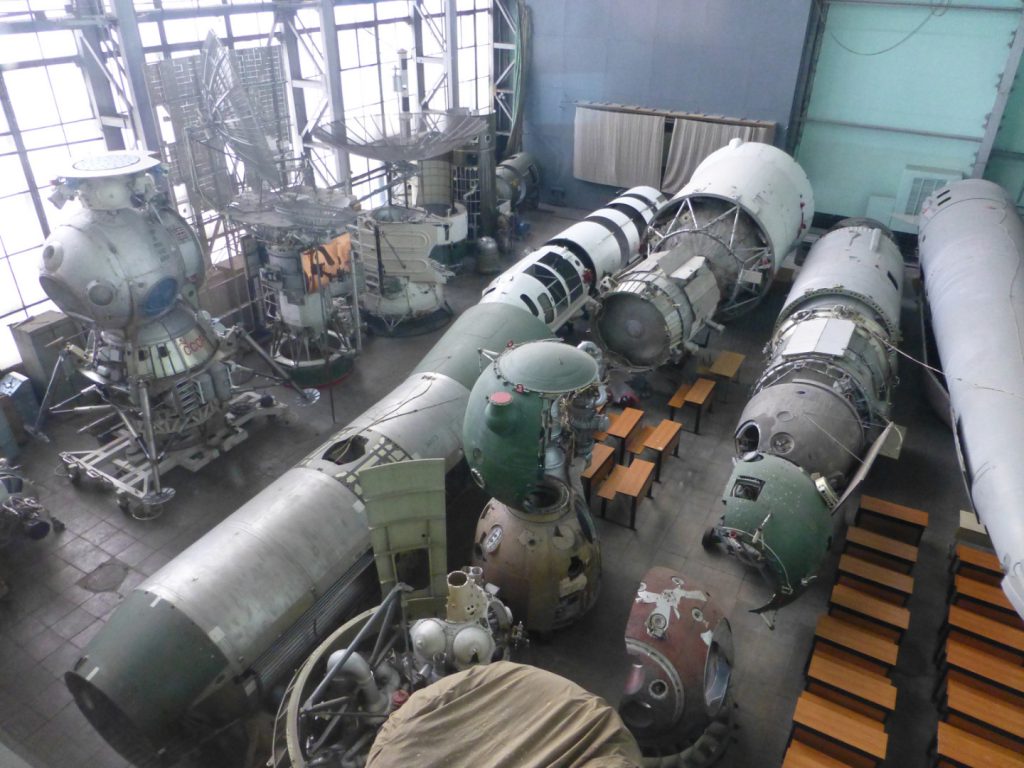
Participation in the Cosmonauts project was fully supported by MAI Vice-Chancellor Dr Shevtsov, but to be able to borrow such a seminal (and previously secret) object also required permission from the Ministry of Education and Science of the Russian Federation. Indeed, we needed two things: permission to lend, and a commitment from someone to untangle the legal ambiguities. It further transpired that in order to resolve the legal status of the object it would also need to be declassified, both to legitimise its role at the Institute and to allow it to travel to the Science Museum. There was even talk of a special government commission needed to consider the request for such a secret object to travel overseas. We fell into a slough of despond at this point.
Fortunately, these knotty problems were resolved through a series of meetings between the Science Museum Director Mr Blatchford and the Minister of Education and Science Mr Livanov and his Deputy Minister Mr Kaganov. The next step was to establish which of the current space enterprises would take responsibility for processing declassification paperwork. LK is a complex spacecraft. The engineering models of it were devised for carrying out various tests and each one was differently equipped. In practice it meant that designers of various parts of the lander would each have to get involved in the declassification procedure. Finally, one of the design units within RKK Energia, the closed joint-stock company ‘Experimental engineering plant of RKK Energia’, completed the procedure and issued the declassification letter[8].
As a result of the Science Museum’s continued effort, the LK-3 is now legally owned by MAI[9], declassified and made available for showing in London[10]. These procedures guarantee the object’s safety, preservation and availability for research, opening a new page in unveiling the hidden history of one of the Soviet Union’s secret space programmes.
Having overcome these impediments, we should also mention the astonishing array of practical issues that also had to be addressed. The Laboratory 601 hanger crane system was no longer working, the hanger door had rusted shut and a tree had grown outside the entrance doors too. The Institute worked diligently to resolve each hurdle and also found an engineer who actually knew how to disassemble the object!
The LK declassification story is just one example of the problems the Museum faced and overcame whilst trying to secure the exceptional loans for the exhibition. Needless to say, similar issues had to be resolved with every space sector loan. These included: proof of ownership; declassification; permission to export; and dealing with hazardous substances associated with 1960s technology, such as asbestos.
By mid-2013 the Museum had everything in place for its special temporary exhibition: a clear concept, a narrative full of fascinating stories, core objects and even an associated publication in preparation. At this stage the greatest risk was a lack of commitment from Roscosmos, the Russian state agency for space, which suffered from complex bureaucratic procedures and had no clear leadership One of our key partners, Rosizo (State Museum and Exhibition Centre, it is responsible for large-scale touring exhibitions and museum events organisation within Russia and abroad), as well as senior members of the Russian government, were to play a major role in resolving issues far beyond the Science Museum’s sphere of influence.
3. Traditional partnerships and the new lenders: museums v industry sector
https://dx.doi.org/10.15180/150406/004The co-authors of this article come from the art history field and shared the initial expectation that a major international exhibition was simply about persuading museums to lend seminal objects from their gallery displays or their extensive reserve collections. Whilst museums were certainly an important part of this project, the really ground-breaking element was persuading commercial and government space bodies – normally with no experience of lending – to engage with and endorse loan requests. Furthermore, in some cases we were to discover that even though key objects were located in these organisations it did not mean that they actually held ownership of them.
3.1. The enterprises
The key partners in the space sector were RKK Energia; the Lavochkin Research and Production Association (responsible for non-manned flight spacecraft and probes); the Gagarin Research and Cosmonaut Training Centre (known as Star City); NPO Energomash (rocket engine design and building enterprise); and the aforementioned NPP Zvezda. With the exception of the latter, the above are managed by Roscosmos.
Our loan negotiations with Roscosmos were impeded by the fact that the agency was itself the subject of a lengthy and complex restructuring process, lasting three years during the period of our exhibition preparation (Sputnik International, 2015). The space industry was also under intense national scrutiny due to several failed rocket launches[11] and this, combined with the restructuring process, meant that we often befriended a range of officials who were then transferred to ‘other duties’[12].
Furthermore, the relationship between the different enterprises and Roscosmos is not straightforward due to a complex corporate structure. In some cases, companies (RKK Energia being the obvious example) are still infused with the fiercely independent mind-set of key figures such as Sergei Korolev.
In this project, our curators needed not only to know the history of the space programme, but have a working knowledge of the legal framework of the Russian government as well Russian corporate law.
During the Soviet period, the structure of the space industry sector (1946–1992)[13] was bewilderingly complicated, as hundreds of its plants and design institutes reported to different ministries, including the Ministry of Defence. The Academy of Sciences served as the official public-facing body, credited as the creative force behind the early successes of space technology. It was permitted to keep the designers, engineers and their work completely classified[14]. Roscosmos, founded in 1992, inherited the complicated structure of the Soviet-era administration. As we discovered, the tangled issue of ownership and the lack of recognition for many important objects was part of the Soviet legacy.
According to information from RKK Energia designers[15], after the manufacture of space equipment was complete, and immediately following its launch, its status would change to that of disused or decommissioned equipment. According to official procedures, retrieved landing spacecraft – the descent module – should be destined for recycling. In practice, the descent modules were retained by the design bureau, now RKK Energia. The historic ones are displayed at the enterprise exhibition hall located at its restricted access premises in Korolev town near Moscow. The aforementioned engineering model of Sputnik 1 and the most iconic of all descent modules, Vostok 1, can be viewed there by the few visitors who secure entry clearance and pass security checks (current delay is seventy days for foreign nationals and by no means automatically granted). Until recently their ownership was unresolved and they lived in a strange limbo: as disused gear they were decommissioned and as display objects they were not formerly acquired. Some were even lost, including cosmonaut Gherman Titov’s Vostok 2. His spacecraft was used in landing simulation tests for the next generation of spacecraft, in the course of which it was dropped and destroyed (Siddiqi, 2000, p 412, and Chertok, 1999).
As we saw in the case of the LK Lunar Lander, the Museum’s request to borrow items, backed up by official letters from Roscosmos, encouraged RKK Energia to formally acknowledge the ownership of these objects. The high international profile of Cosmonauts brought this to the government’s attention. The Ministry of Culture (MoC) was asked to develop procedures that would help to make the enterprise-owned artefacts part of Russia’s national heritage in future.
3.1.1. Saving the spacesuit
The fate of a precious artefact – Gagarin’s spacesuit and helmet with iconic ‘CCCP’ sign, for example – demonstrate that the preservation of key historic objects was often a matter of chance.
NPP Zvezda, a formerly classified military plant, is a joint stock company. This privately owned enterprise is managed by its Director General and Chief Designer Sergei Pozdniakov, appointed by a board of shareholders. NPP Zvezda has a company museum, located at the plant’s premises in Tomolino settlement, Moscow district, with an impressive collection of original life-support equipment. Their newly refurbished exhibition space presents the unique story of life-support technology. It starts from the world’s first spacesuit, SK-1, to cosmonaut’s (and 2011 astronaut’s) ‘professional uniform’ Sokol SV-2, and includes a 1960s prototype of the first man-manoeuvring unit and test-flown spacesuit for the cancelled Soviet space shuttle programme Buran. This impressive ‘fashion gallery’ of life-support technology is run by retiree volunteers and is accessible upon request and subject to security checks. The Museum’s most precious exhibit is Gagarin’s flown spacesuit. It is kept in a Perspex capsule-vitrine and never leaves the premises of the Museum, located in a refurbished air-raid shelter deep underground beneath the administrative building of the enterprise.
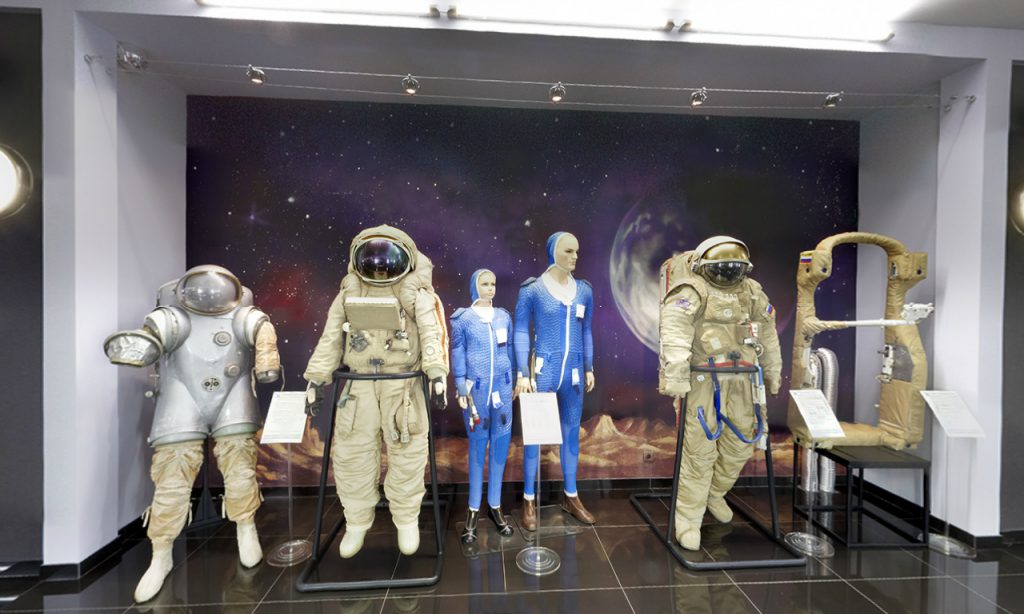
There are a number of Gagarin SK-1 spacesuits, held by various museums in Russia and abroad, including one on loan to the Smithsonian. Those in Russia tend to have almost apocryphal stories associated with them. One of his ground training SK-1s was given to the Lyubertsy Technical College by the first man in space himself. However, the NPP Zvezda’s spacesuit is the very one worn by Gagarin in space. Upon the first cosmonaut’s return, it was subjected to a number of tests, designed to improve the equipment for future flights. After the NPP Zvezda team finished running tests on the spacesuit a few years later, it could have been discarded as disused gear. And officially it still is. The list of such precious objects in NPP Zvezda’s care will delight any collection curator. For examples, Tereshkova’s cooling garment with original embroidery featuring a seagull (her inflight call name); Leonov’s EVA spacesuit and life-support rucksack; a stratospheric flight dog spacesuit and ejector seat, among others. All of them iconic, and all near-misses in terms of extinction.
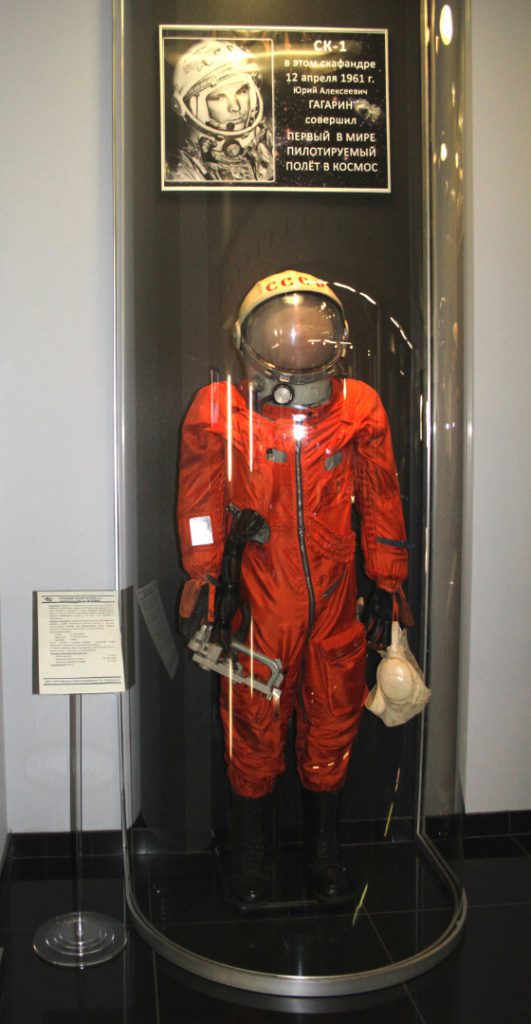

Thus, survival of historic space technology was largely due to the initiative of individual enterprises, rather than state intervention or deliberate collections strategy. Cautious about state initiatives regarding the status of objects, the enterprises prefer to keep the equipment off official ledgers and within the restricted access territory of their own plants. It is clear that some potential lenders feared that agreement to our loan requests would raise their profile and the risk of their being ‘nationalised’. To secure the loans not only did we have to convince these enterprises of the benefits associated with the international exhibition of their equipment, but also to offer unequivocal guarantees of the safety of these objects while in transit and on display.
3.2. The cultural sector
The majority of our loans have been borrowed from Russia’s museum sector, itself subject to strict state-imposed regulations for international lending. Apart from the aforementioned MMC and Kaluga museums, important loans came from the State Tretyakov Gallery, the Polytechnic Museum, the State Central Museum of Contemporary History of Russia, and the Shchusev Museum of Architecture, as well as state libraries, archives and private collections.
We should also note that while the space industry was a hesitant lender, the museums were instantly generous. For example, in December 2012 we visited the State Tretyakov Gallery, Moscow, to explore the possibility of borrowing a limited number of space-related paintings. After a brief meeting with the Director we were then taken to a (then unused) gallery where the curators had hung their entire collection of space-related paintings, taking most of them out of storage especially for our visit. We were stunned and could have mounted an exhibition from these artworks alone. Many of the canvases were vast. After remorseless space industry discussions, it was an unexpected pleasure to be able to make editorial choices about the paintings we wanted.
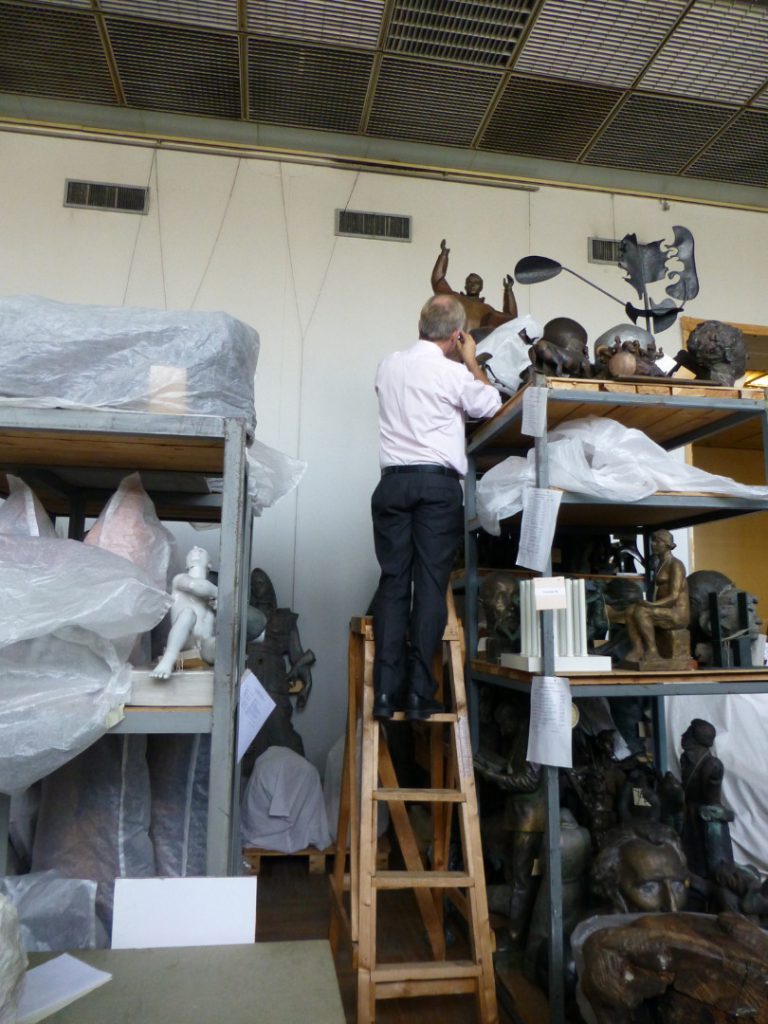
3.2.1. Recent history of international lending
The mechanism for arranging loans of such scale and importance was the subject of detailed examination by the Russian MoC. Since the country opened its museum stores over twenty years ago for international exhibition loans, cultural institutions in the West established a number of ways of working with their new partners. Among these are:
- staging large state-supported projects
- working through charitable foundations
- forming long-term partnerships
- participating in bilateral years of cultural cooperation (YoC).
The collapse of the Soviet Union in 1991 triggered a keen international interest in Russian art, culture and technology. After the formation of the Russian Federation in 1991, a number of grand exhibitions surveys of Russian art were staged in Europe and the US. In the past decade, leading world museums have staged large-scale exhibitions such as Russia! (Guggenheim, New York, 2006), From Russia (Royal Academy of Art, London, 2008), and Sainte Russie (Musée du Louvre, Paris, 2010). These have been powerful tools in creating an image of Russia, both historic and contemporary.
Furthermore, museum ties between Russia and Britain have a long history, from Catherine the Great’s acquisition of Lord Walpole’s art collection in 1779 to fast tracking Immunity from Seizure regulation to enable the timely opening of From Russia, in 2008. In December 2014, the British Museum agreed to lend to the Hermitage Museum one of its most treasured exhibits, one of the Phidias’s Parthenon sculptures, the so called Elgin marbles, to celebrate the Museum’s 250th Anniversary. It was a controversial loan from the British Museum, but a major symbol of Anglo-Russian collaboration for the Hermitage.
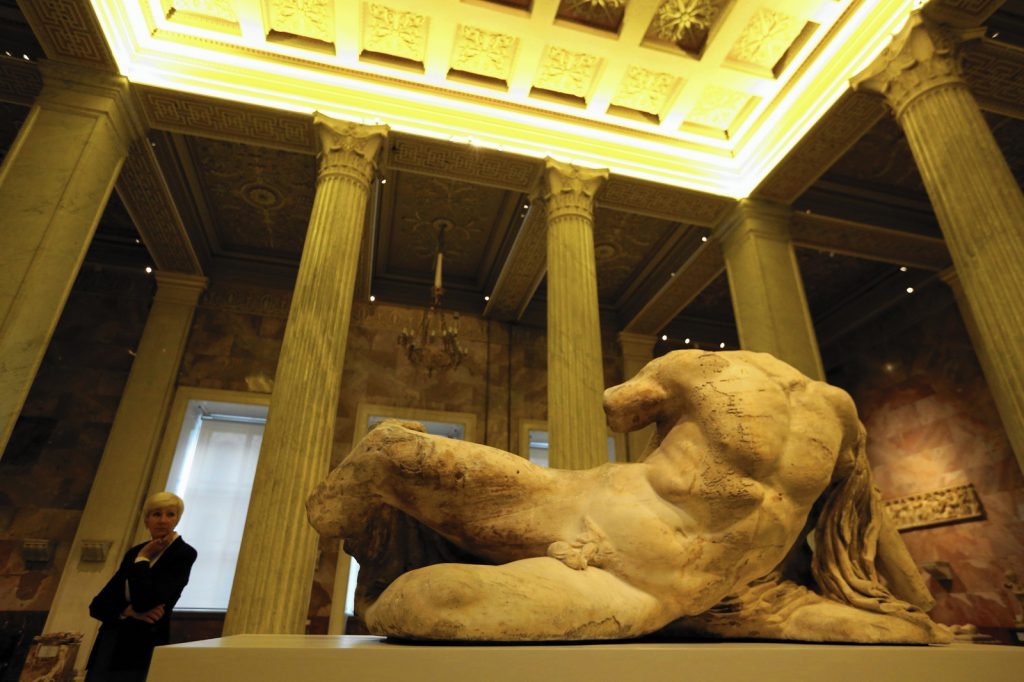
Reciprocal loans allowed the British public to marvel at the treasures from the Hermitage, through an extensive programme of exhibitions, supported by The Friends of Hermitage – a charitable foundation dedicated to working for the State Hermitage outside Russia. The foundation supports dozens of events and exhibitions every year, making the Hermitage collections accessible to the British public and facilitating access for Hermitage curators to the treasures and expertise of the museum sector in the UK. In 2013 the Hermitage supported Houghton revisited, which for the first time in 250 years brought the treasures of Sir Robert Walpole back to the house they were originally designed for (Bouis, 2013).
Other significant collaborations include that between the V&A and the Moscow Kremlin Museums. Over the past ten years, the Moscow Kremlin Museums and the V&A have shown a number of exhibitions based on material from each other’s collections, such as Two Centuries of British Fashion in Moscow, and Magnificence of the Tsars in London (Amelekhina, Levykin, 2008).
Although the aforementioned loans were not directly connected with space material, they created a context for unique cultural material leaving the country of origin for temporary display, and returning. This proved instrumental in the Science Museum’s negotiations. While the obvious point we made to those organisations was that precious objects had been safely lent before, the specific content of some art exhibitions also proved to be useful precedents too. Some lenders were, for example, concerned about the fragility of the spacesuits but had to accept that if Russia was prepared to lend the immensely precious and fragile coronation robes of the Czar then conservation and travel risks were not insurmountable.
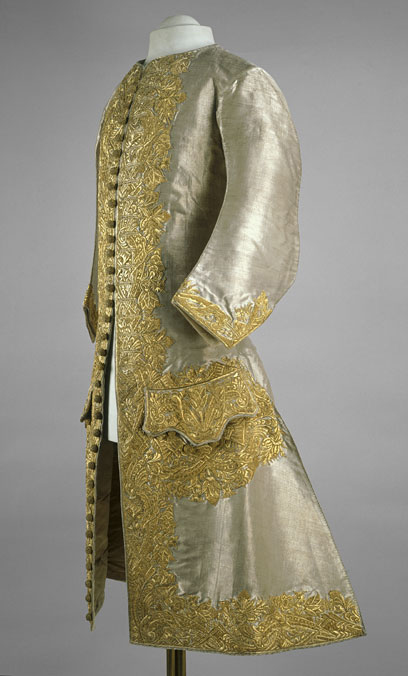
3.2.2. Years of Culture
The last of the listed established ways of collaboration with the Russian museum sector was participating in bilateral years of cultural cooperation. Such large-scale programmes based on agreements between two governments are staged regularly to bring the people of two partnering states closer, to help business and to foster cultural relationships. Such bilateral years operate within a state controlled framework and the choice of the partnering country tends to reflect Russia’s current political and economic priorities. In recent years, the deterioration of Russia’s international relationship with the West has had an impact on reciprocal cultural exchange programmes. In 2013, the bilateral year with the Netherlands was overshadowed by the Greenpeace Arctic Sunrise scandal. In 2014, the Russia-UK Year of Culture went ahead despite the withdrawal of official support following events in Ukraine. The 2015 Poland-Russia Year of Culture was called off by the Polish side (Radio Poland, 24 July 2014) and replaced by Days of Culture with Argentina, marking the 130th anniversary of diplomatic relations. Still, reciprocal cultural years and single loans of exceptional artworks and historical objects help to foster and maintain international relationships even during days of political and economic turbulence.
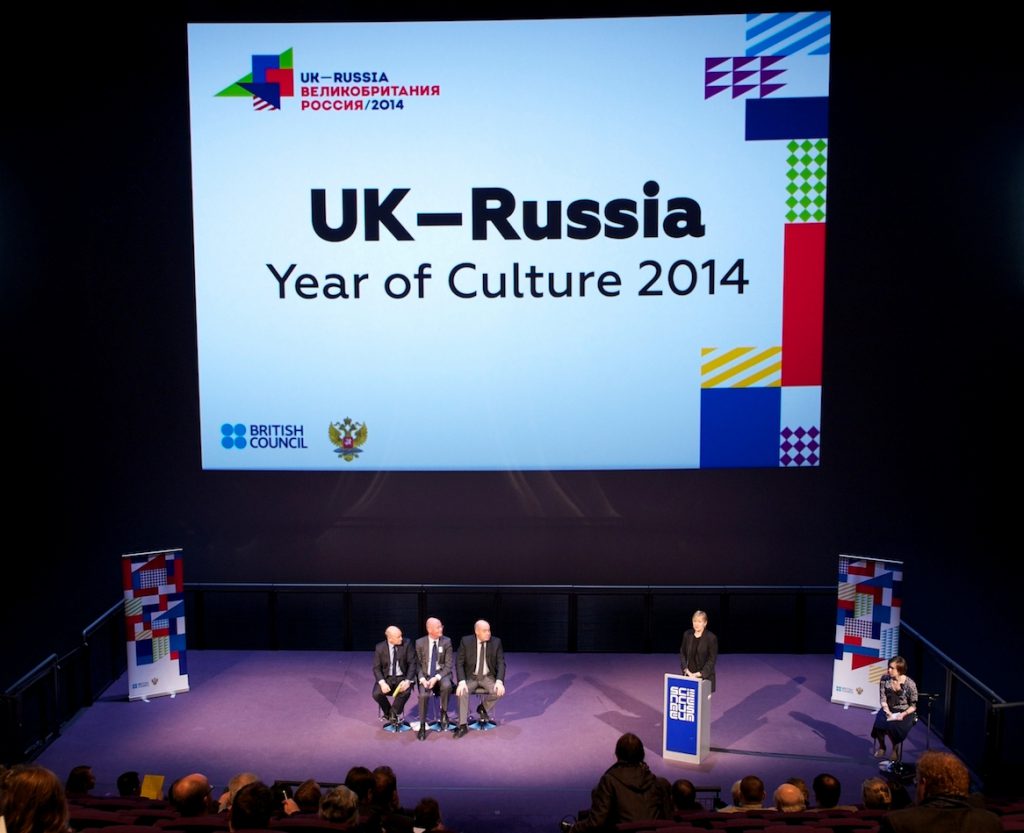
The Cosmonauts project fell into the first category of established types of exhibitions (large state supported project) and benefited from the framework of the UK-Russia YoC in 2013–14 (particulars are discussed in the following section). As shown in this section, perusing two borrowing paths in parallel – the cultural and the industry sector ones – presented two sets of issues the Museum had to address and handle; both would require government support for the project. While the first steps towards gaining official support for the exhibition and building relationships were made at the earliest stage of the process in 2012, politics played a key role in Cosmonauts right up to the evening of the opening ceremony.
4. Partnerships: politics, pragmatism and passion
https://dx.doi.org/10.15180/150406/005This exhibition project came with a degree of political exposure. Moreover, from an early stage it was clear that without the highest level of diplomatic support and the right delivery partners, the combination of a febrile landscape and genuinely tough pragmatic problems would conspire to sink our ambition.
4.1 The official support: the British team
After initial encouragement from Ms Rose, the British Council’s Director of Arts, we were introduced to Director of the British Council Moscow office Paul de Quincey and his team, who proved to be important in ensuring a smooth introduction to lenders from the cultural sector. However, to access the collections of the various scientific enterprises the team needed an introduction from a different official body. We were able to call upon assistance from the British Embassy’s Science and Innovation Network (SIN). Dr Julia Knights and Dr Marina Sokolova were the driving force behind the UK-Russia Year of Space 2011–2012, which had coincided with the fiftieth anniversary of Gagarin’s pioneering mission. SIN was instrumental in establishing lines of communication with Roscosmos’ enterprises and NPP Zvezda.
This network had a strong working relationship with the enterprises and ensured that the Science Museum had a receptive welcome in the first instance. It cannot be sufficiently stressed that colleagues in Roscosmos and the enterprises had never dealt with museum loan demands previously, had no staff with loan administration and condition reporting experience or any funds to cover associated costs. That the loans still proceeded is a testament to the crucial role of SIN and the goodwill of our Russian colleagues. The British Council also played a crucial role in promoting the idea of the UK-Russia Year of Culture and then managed its delivery in somewhat choppy waters.
The Foreign & Commonwealth Office (FCO) also played an important role, especially in providing the Russian authorities with assurances as to the security of the objects as anxieties about the risk of seizure arose from 2014 onwards (see 4.4). The project team ended up almost expert itself in the abstruse usages of diplomatic exchanges, such as the note verbale.
Throughout negotiations, the Director maintained dialogue with the British Ambassador, the Russia Desk of the FCO and the international officers of the Department for Culture, Media and Sport (DCMS). Whilst the Science Museum is designated as a Non-Departmental Public Body, and thus enjoys its own independent Board of Trustees under the National Heritage Act and a considerable degree of financial and decision-making freedom as compared with a standard government department, it nonetheless had to proceed with every caution regarding the geopolitical ‘mood music’.
The Science Museum Trustees remained consistently supportive of this project and the FCO was also consistently sure of its merits too, but one of the great ‘What if?’ questions would be how the Museum might have proceeded if the FCO and/or DCMS had taken a negative view, both ethically and pragmatically.
4.2 Finding the pragmatic lynchpin
By mid-2013 it became clear the Museum would need an official partner in Russia to administer, coordinate and facilitate its relationship with lending institutions, both cultural and non-cultural. The key factor, ultimately leading to the successful signing of the loan agreements with our most reluctant lenders, was our choice of partnering institution.
Finding an ideal partner in Russia to work with seemed daunting. Different systems of administration, collection care and record-keeping plus an inevitable language barrier might discourage a European museum from staging a Russia-themed display. A further complication is that the country’s museum sector consists of collections managed on local and federal levels. At the early stages of content development for Cosmonauts curators established a close working relationship with the MMC, a museum under the jurisdiction of Moscow authorities. As our intellectual partner the MMC curators provided expertise, as well as opening their stores and providing introductions on how to initiate or revive relationships with some of the key figures of the space programme, the cosmonauts Aleksander Lazutki, Vladimir Dzhanibekov and Anatoly Artsebarsky. Although we enjoyed our working relationship with MMC, the museum was not a federal level institution and therefore unable to access specific state authorities and procedures, which was essential for our main partner.
Cosmonauts has 24 partners with 18 lenders whose objects needed to be consolidated for customs clearance and shipping. We needed one institution, a key partner who would agree to take responsibility for consolidating the works from the museums, archives, private collections and enterprises and applying for permissions to take the objects out of the country. The specific status of MMC would not allow loaning objects from other museums on our behalf as only the institutions with Federal status have such authority. The Polytechnic Museum might have been a good alternative but since 2013 has been undergoing major restructuring and site restoration works that affected its capacity and staff availability.
Finally, in mid-2013 the MoC ruled that Cosmonauts be offered a partnership with the State Museum and Exhibition Centre Rosizo. This proved to be a brilliant choice – because of its status, experience and the quality of its management team. The Rosizo team have ‘heard it all before’. What we mean is that in many of the space industry negotiations we were presented with a bewildering array of administrative and legal protocols. Rosizo was invaluable in separating the wheat from the chaff and in some cases sweeping aside some of the more convoluted bureaucratic hurdles.
Created in 1959, Rosizo has decades of experience in exhibition practice and handing complex consolidated loans within Russia and the former Soviet Union for international projects. Cosmonauts was to benefit greatly from such a partnership. For Rosizo the timing was also perfect, as in 2013 it had revived under the leadership of its new director Zelfira Tregulova. Rosizo played a key role in the successful outcome of the project. As our key partner and in her official capacity of state cultural institution director, Dr Tregulova was able to represent the project at key government and ministerial meetings as well as in negotiations with Roscosmos.
Rosizo employed its experts to confirm the non-cultural sector equipment status of objects of historical significance – vital for exporting dual-use technology for exhibition. Each enterprise had to formalise the ownership of its artefacts, thus resolving the issue of unaccountability. Second, acknowledgment of the artefacts as items of national heritage then opened the door to possible inclusion to the State Museum Fund. Such procedure will ensure the objects safety and provisions for appropriate care. Finally, Roscosmos and other space sector managers felt much more at ease signing loan agreements with Rosizo, a national cultural institution, rather than a foreign museum. It also helped Roscosmos to navigate the unfamiliar waters of the British rules and regulations on everything from health and safety to advising on the clauses of the British Government Indemnity Scheme or applicability of the Immunity from Seizure to their property.
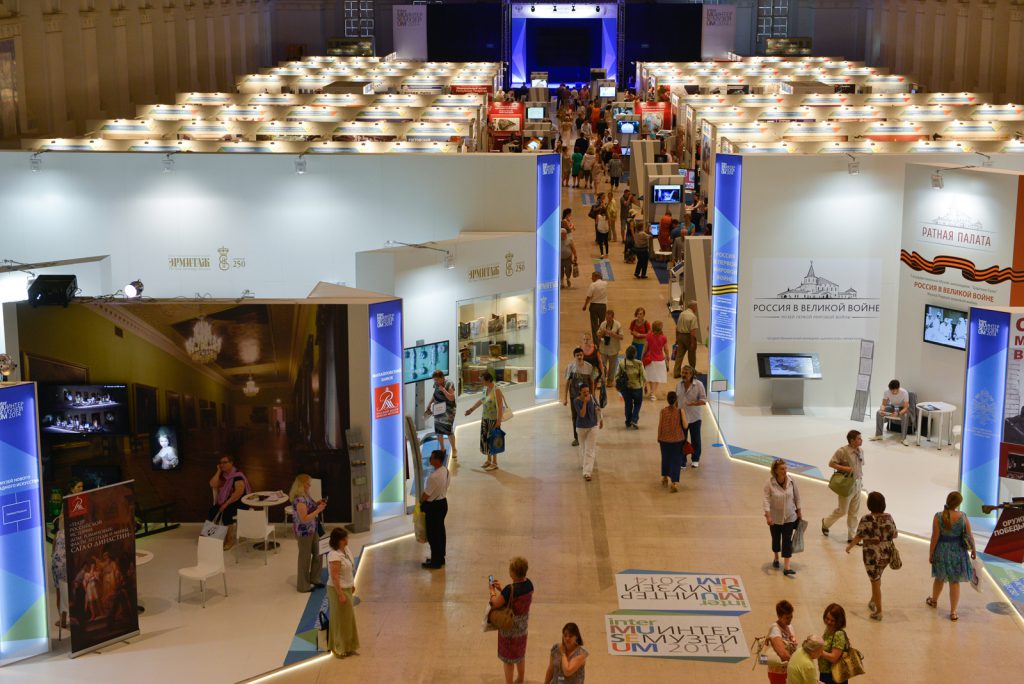
Apart from loan administration and consolidated shipping Rosizo also handled a large budget, allocated by the MoC to the project as the key event of the YoC. These funds enabled Rosizo to appoint a full-time member of staff to coordinate and administer the loans, as well as cover the cost of restoration, photography, framing, packing and shipping of the cultural sector loans and loan administration of the majority of space industry loans. In their turn, all lenders, including the state museums and archives, private individuals and space industry enterprises waived significant loan fees. Such support could only have been offered by the Russian side within the official framework of the bilateral YoC through a Russia-based partner. The funding was unprecedented in scale and was maintained even after the delayed exhibition opening fell outside the framework of the official YoC programme. Continued Russian government support of the project proved a key factor in the story of Cosmonauts.
4.3 Governmental support
By now it will be evident that nothing on this project was straightforward. Thus we learnt very early on that even where we appeared to have the support of ‘the Russian government’ that meant little unless we had enlisted precisely the right elements of the government machine and specific individuals and ministries.
The inclusion of Cosmonauts in the 2014 Year of Culture programme ensured support on the ministerial level in Russia: Dr Shvydkoy on the Foreign Ministry (MFA) side, Deputy Minister Manilova on the MoC side. However, our key lenders from the space industry were not subject to the purview of these ministries and this was not a mere technicality.
With NPP Zvezda’s keen support and the willingness of some Roscosmos enterprises to collaborate, our main challenge was to secure written consent from Roscosmos and win the trust of RKK Energia. Their request was for the Science Museum to provide reassurances from both the UK and Russian governments. This included a statement of support from the Russian Government (although it was not clear what this meant) and a ‘comfort letter’ from the MFA also indicating their support. They also sought ‘cast iron’ guarantees from the UK’s government about the safety of the objects and immunity from seizure.
Such requests made sense in the context of some of the landscape we have outlined so far. These were organisations with no experience of the normal language and currency of museum lending and the Roscosmos reluctance could be traced to the aborted 2011 exhibition plan. Without doubt, it was also felt that this was a dance where no-one was prepared to commit to the floor, for fear of criticism, especially as the bilateral relationship worsened. And on a practical level, there were genuine and messy questions about status and legal issues, especially at a time when the Federal Space Agency was undergoing restructuring. It also felt that the political crisis of 2014–15, with EU sanctions against Russia over Ukraine and state property seizure related to the Yukos case, might be the ‘final straw’ for some lenders. Some of the press coverage around the exhibition suggested that this issue was the central and killer risk to the project proceeding (Art Newspaper, 2014), but the nervousness of some lenders derived from many sources.
We could not have overcome these problems without the good fortune of finding the right allies at the highest levels. In July 2013 the exhibition curators went to Parliament to present the exhibition to Lord Speaker Baroness D’Souza, in her role as UK Chair of the Organising Committee for the UK-Russia Year of Culture. Following this meeting an official letter addressed to Russia’s Deputy Prime Minister Golodets in her capacity as the Russian Chair of Organising Committee was dispatched:
May I take this opportunity also to ask for your help with the exhibition of Russian space exploration that will open in October 2014 at the Science Museum in London. This will be a flagship event of the Year of Culture. The success of this exhibition depends on the inclusion of key historic spacecraft and artefacts of the Russian space programme, residing in the collection of the Roscosmos enterprises and institutions. My understanding is that a state order needs to be issued to ensure the release of those artefacts for loan. I am therefore respectfully asking, as Co-Chair of the Year of Culture Organising Committee, whether you could arrange for such an order to be issued.
This letter was the first of many addressed to officials in Russia, sent through diplomatic channels, and delivered to ministers and government offices throughout 2013–15. But this letter proved to be key in securing support from our strongest ally, Deputy Prime Minister Golodets. The Museum Director welcomed Ms Golodets at the Science Museum a few months later at the opening of the Collider exhibition – the launch of the Science Museum’s ambitious new programme of ground-breaking exhibitions. Attended by leading scientists Peter Higgs and Stephen Hawking as well as Chancellor George Osborne, the event left a lasting impression on the Deputy Prime Minister and convinced her that the Museum would deliver a world class exhibition.
Ms Golodets’ leadership and support proved to be crucial in deciding the fate of Cosmonauts. When RKK Energia subsequently failed to sign the loan agreement – putting the entire project on hold in August 2014 – she held an urgent meeting with officials from Roscosmos, MoC, MFA and RKK Energia. The outcome of this meeting was her instruction to Roscosmos to ensure the temporary loan of required artefacts from the enterprises to Rosizo for the exhibition
Even after this intervention, with the frosty political atmosphere of EU sanctions against Russia and the pending threat of Yukos-related seizures, all our partners were still seeking fresh MFA guidelines on the risk involved in sending loans to London. The Embassy of the Russian Federation in the UK and Ambassador HE Alexander Yakoveko offered strong support and advice from the earliest stages of the project. The Ambassador’s personal interest in the project was strengthened by the active role he had taken some years previously in establishing international legal regulations for space exploration. The support from Dr Yakovenko’s colleague Mikhail Shvydkoy, Special Envoy of the President of the Russian Federation for International Cultural Cooperation with the MFA, was also crucial. Dr Shvydkoy’s success in promoting Russian art and culture abroad derives from his formidable network of contacts among the international cultural sector, acquired in his former role of Culture Minister. Mr Blatchford and the curatorial team visited him several times in Moscow at his office in a Stalin-era skyscraper on Smolenskaya Square, rumoured to be previously occupied by Leonid Brezhnev’s son. From the very first meeting, he understood the audacity of the exhibition and all the ‘internal’ opposition it might encounter.

The robust impact of such key players was that by Spring 2015 all of the lenders were clear on their government’s firm support for the project, but as the detailed plans for shipping the objects were being finalised both the British and Russian sides had to revisit the troublesome issue of seizure risk.
4.4 The final frontier: government indemnity and Immunity from Seizure
Several years before the Cosmonauts project was even a gleam in our eye, the Russian government had cause to be concerned about the safety and security of its cultural treasures when lent overseas. Not surprisingly, the perceived ‘crown jewel’ status of proposed loans and developments in the political and legal landscape meant that this anxiety could have been a deadly barrier to the project proceeding. But, to be frank, for some lenders the threat was both a real concern and also a not inconvenient narrative for impeding loan negotiations.
The loans to this exhibition came under the UK Government Indemnity Scheme and Immunity from Seizure regulations. Earlier in this paper it was emphasised that a Russian exhibition contributed to changing UK legislation, introducing Immunity from Seizure as Part 6, Section 136 of the Tribunals, Courts and Enforcement Act 2007 (2007 Act). It confers protection on objects loaned from abroad for temporary public exhibitions at the approved venues, provided certain conditions are met (Part 6 of the Tribunals Courts and Enforcement Act 2007). This legislation was enacted following Russia’s threat of withdrawal of loans from the Royal Academy of Arts 2008 exhibition From Russia: French and Russian master paintings. Over 120 modern French and Russian paintings from the collections of the State Tretyakov Gallery, the State Russian Museum and the Hermitage were selected for this survey of the main trends of modern European painting from Realism to non-figurative avant-garde movements.
To enable the timely opening of the exhibition in January 2008, the 2007 Act was fast-tracked by the DSMC around Christmas 2007 to bring the legislation forward. With potential claims from the families of the former owners of the artworks nationalised after the October Revolution of 1917, Russian authorities did not want to take chances (Bridge, Batty, 2007). Russian lenders’ insistence on getting immunity from seizure is based on the requirements of the MoC of the Russian Federation to provide the proof of the guarantees for the safe and timely return of the loans. Only 25 museums and galleries in the UK are approved venues for providing immunity from seizure to their lenders from abroad[16]. Timely application to DCMS for the approval to be granted should allow an institution planning to put Russian loans on display to be able to offer immunity to the lenders.
Since 2007 the Act has enabled an unprecedented number of unique loans to be displayed in the UK, such as Vermeer’s ‘The Lacemaker’ from the Musée du Louvre (Vermeer’s Women: Secret and Silence, The Fitzwilliam Museum, Cambridge, 2011–2012) and precious mosaics, sculptures and applied art from Pompeii and Herculaneum (Life and Death in Pompeii and Herculaneum, The British Museum, 2013), among others.[17]
However, whilst the legislation has enabled the continued flow of loan exhibitions between the UK and Russia, in other major countries the absence of such provision has had serious consequences. Since 2011 the entire interloans programme between the US and Russia has been paused (Grimsted, 2013) as a result of controversy over the relationship between the US Library of Congress and the Russian government over the Schneerson Collection court case (Bazyler, Gerber, 2010). The collection of archival and printed materials assembled by spiritual leaders of the Chabad Chasidic movement was partly nationalised by the Soviet state after the October 1917 revolution, partly seized by it from the Nazis in the course of the Second World War. The American Chabad-Lubavitch community leaders, heirs of the late Rebbe Schneerson, initiated a court case over the ownership of the Schneerson collection, currently held at the State Russian Library. In 2010 they won the case in the US District Court, which jurisdiction is not recognised by the Russian government. As the Library of Congress failed to return seven publications from the Schneerson collection, on temporary loan since 1994, the State Russian Library initiated a lawsuit in the Moscow Arbitration Court. The handling of this dispute ‘led to canceled loan agreements, revoked artworks, and strained diplomacy between the United States and the Russian Federation. The net effect has been to limit the international free flow of cultural property and to decrease the public’s access to that cultural property’ (Barcia, 2012, p 477). The latest positive trends, manifested by exhibitions borrowed from the USA such as Alexander Calder Retrospective from the Calder Foundation Collection and Other Private Collections exhibition at the Pushkin State Museum of Fine Arts in Moscow (9 June–30 August 2015), could be overshadowed by the new round of political hostilities.
As Cosmonauts proceeded, our partners in Russia became concerned that the UK might experience a comparable situation to that obtaining in the USA. On 18 July 2014 a panel at the Permanent Court of Arbitration in The Hague issued an order against the Russian Federation in respect of claims from Yukos shareholders (PCA Case No. AA 227). The former shareholders of this privately owned energy company were seeking compensation from the Russian Federation for unfair proceedings in a tax evasion case. The Permanent Court ruled against Russia, awarding the claimants $50 billion. As the claimants are now taking steps to enforce the awards in the EU with the Russian Government assets seized in France and Belgium, MoC is concerned about potential seizure of cultural heritage loaned abroad.
On 17 July 2015 a meeting between Culture Minister Medinsky and Federal museum directors issued a major new recommendation: that the applications for temporary international loans should only be considered when supported by guarantees by state authorities of the host country (Novosti Ministerstva, 2015). At this point two important object shipments had already been delivered to the Science Museum, but the bulk of exhibition objects were still in Russia. During June and July there was flurry of renewed examination – by both sides – of the legal position and protection offered by the UK immunity regime.
This was a difficult period for the project team because although we felt certain that the seizure provisions were very strong, we also had to accept that only our Russian partners could really make the final judgment on what degree of exposure and risk they were prepared to accept. From our viewpoint, the ‘right’ decision was made and the Ministry of Culture issued the final export licenses for the final shipments on 12 August 2015, enabling their timely arrival at the Museum for the exhibition installation.
Thus, the high political profile of the exhibition in the darkening atmosphere of EU sanctions caused a number of considerable organisational and logistical complications resulting in a delay in Cosmonauts delivery. Nevertheless, consistent support from state officials on both sides, an unshakeable commitment to the project from the Science Museum’s side, and strong partnership with our counterparts in Russia have permitted us to resolve the unfathomable number of complications and to finally open this long anticipated show to the public.
5. Concluding thoughts: forewarned is forearmed
https://dx.doi.org/10.15180/150406/006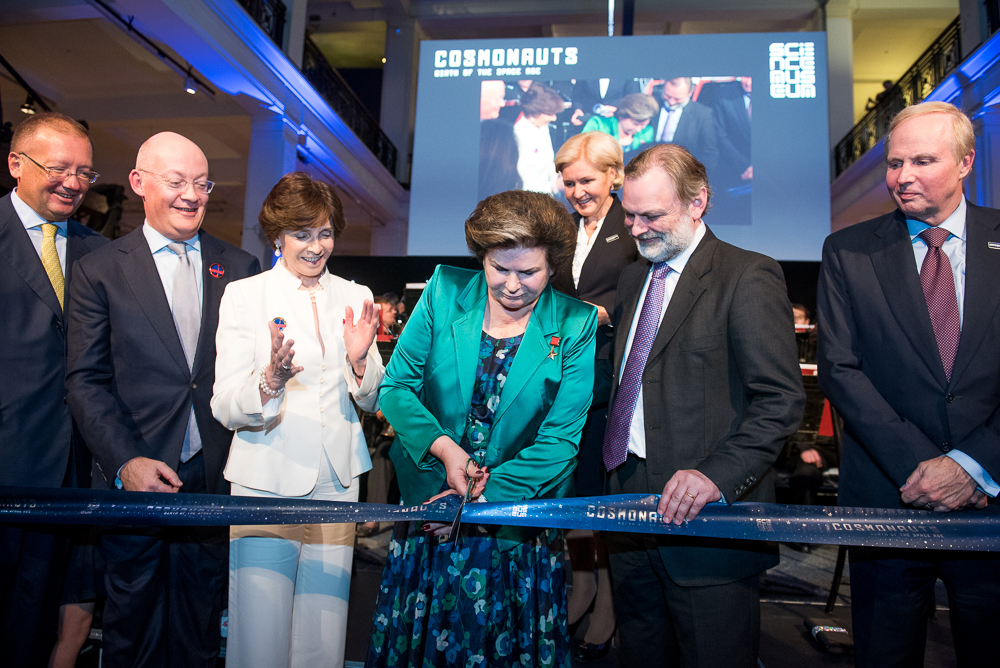
We have had ample cause to reflect on two central questions: the factors that drove this project to a successful conclusion and the wider issue of sustaining cultural engagement in turbulent times.
The first ‘success’ factor was the most fundamental of all: the Science Museum curatorial team knew what it was talking about. They conveyed expertise and passion to all the potential lenders and key potential government supporters. In the early meetings, especially those with the space enterprises, we would have been easily deflected had the team not been absolutely sure of their ground. The team knew which objects really mattered and why the substitutes that we were sometimes offered were lesser, tangential or ersatz. When undertaking a project as vexed as this, it was vital that we convinced potential partners, and especially those senior government figures who were taking some personal risk in backing us.
The second element was having deeply rooted existing relationships with key colleagues in the Russian museum and governmental world, and close support from the British Council too. On a project such as this there are two ‘translation problems’: one: understanding (literally) what someone has said in a meeting, and two: what they really mean. There were also key points where Russian colleagues gave us essential advice. For example, at certain points it was tempting – as in a classic negotiating scenario – to set an absolute deadline for a decision after which the project would be cancelled. However, shrewder heads advised that those who were hostile or reluctant lenders would relish us setting a trap for ourselves and would simply drag things out so that the deadline would be missed.
There were many periods, especially in 2014, when it was very difficult for us to know what was really going on in Moscow. The exhibition was eagerly discussed by officials in a range of government departments beyond the MoC, each with a view on every aspect of the project, and the restructuring of the space industry made the blizzard of conflicting messages and personalities even worse. But the lesson was always clear: no decision was invariably better than the wrong decision; and to stay calm and let the Russian government system work its course.
On the question of cultural engagement, we were heartened to see that the major report by the European Union Committee of the House of Lords, published in early 2015, stressed the importance of maintaining exchanges in the fields of culture, education and science (House of Lords, 2014–15, pp 7, 91–93)
Indeed, it became ever clearer – and apologies if this sounds a little grand – that the exhibition had become a key bridge in the relationship between Britain and Russia. Working on the project was also a vivid reminder too that when the press speak of what Russia thinks, the statement is meaningless. We encountered a great array of opinions and perspectives. We also formed key alliances and very much hope that the legacy of this project will be two-fold: Russian space material for the Science Museum galleries; and future exhibition partnerships with the like of Rosizo, the Memorial Museum of Cosmonautics and the Polytechnic.
In the jargon of the business world, one might describe Cosmonauts as a fine example of high risk, but high reward.
Tags
Footnotes
Back to text
Back to text
Back to text
Back to text
Back to text
Back to text
Back to text
Back to text
Back to text
Back to text
Back to text
Back to text
Back to text
Back to text
Back to text
http://www.artscouncil.org.uk/what-we-do/supporting-museums/cultural-property/protecting-cultural-objects/immunity-seizure/ (accessed on 12 January 2015)
Back to text
Back to text


